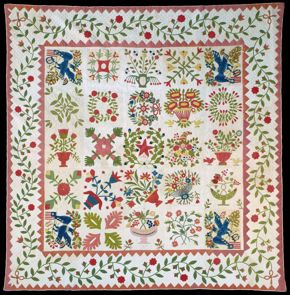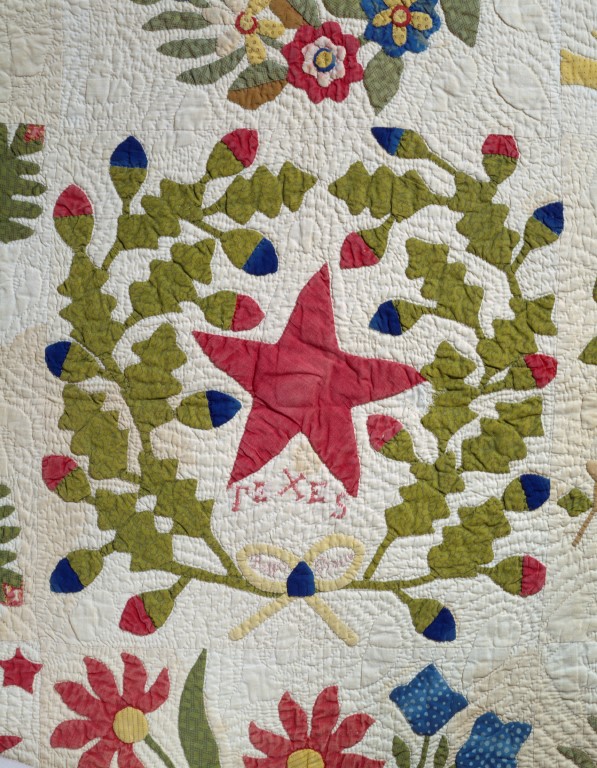A Unique Quilt’s Salute to Texas February 28, 2019

American, Album Quilt, c. 1840–55, cotton, the Museum of Fine Arts, Houston, the Bayou Bend Collection, gift of the estate of Miss Ima Hogg.
The center of the Album Quilt’s design is the word “TEXES,” above which is an embroidered star.
In the 18th century, Europeans brought the basic skills of quilt-making to the colonies, where these skills flourished. Both useful and beautiful, quilts became a quintessential American tradition in the 19th century. Different techniques and styles emerged, such as whole cloth, pieced, and appliqué.
A Creative Tradition
Bed quilts are some of the few handmade articles that American women created to show their creativity and skill. Often working as a group, they customarily sewed these bedcovers to mark important life events such as marriage, the birth of a child, or a family member leaving home.
Striking Example
The range of 19th-century decorative textiles in the Bayou Bend Collection includes numerous quilts and woven coverlets, many given by Ima Hogg. One such example is the striking Album Quilt, which features floral and patriotic motifs—including eagles, which anchor the four corners of the quilt, and even a nod to Texas.
The Lone Star State
Texas gained its independence from Mexico on March 2, 1836. Not long after that, Album Quilt was stitched by an anonymous quilter from the Baltimore area, who seemed unfamiliar with the spelling of the new republic’s name. In the center of the design is the word “TEXES,” above which is an embroidered Lone Star—the unmistakable symbol of the state.






